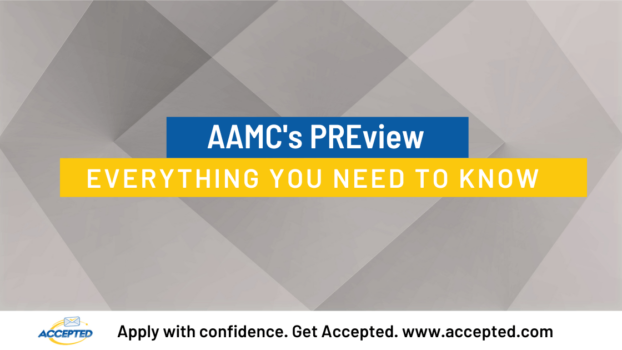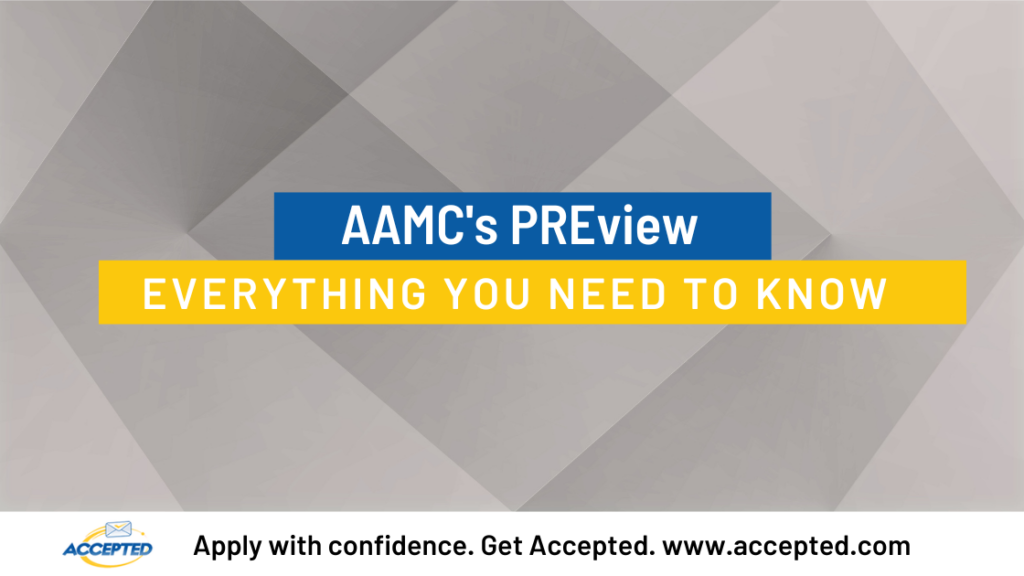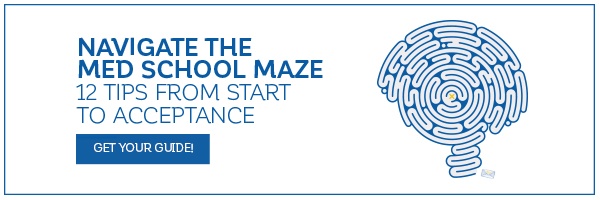

What is AAMC’s PREview exam?
This assessment tool is called PREview, and it is a type of situational judgment test.
The AAMC’s new exam, PREview, was beta tested in the 2019-2020 cycle by two medical schools (the University of California, Davis, and the University of Minnesota). This group expanded in 2020-2021 to include Geisinger, Morehouse, and the University of Alabama, Birmingham, and beginning in the 2022-2023 cycle, all medical schools are invited to use AAMC PREview, but not all are recommending or requiring it. Please check each school’s website and MSAR profile to see whether the programs you are applying to are using PREview and whether they require, recommend, or accept it for research only. Currently, the only DO program recommending PREview is the Des Moines University Doctor of Osteopathic Medicine program.
It is considered a tool to help admissions committees assess the pre-professional competencies of their applicants.
What is PREview’s format?
The PREview exam is a 75-minute test (90 minutes including pre- and post-test procedures) that is monitored by a remote proctor. Applicants must show their photo ID and have their identity verified by the proctor before taking the exam. Each applicant is presented with a series of written scenarios and must decide on the “effectiveness” of possible responses or behaviors.
The questions have four answer options:
- Very ineffective
- Ineffective
- Effective
- Very effective
The tricky part is that some scenarios have more than four possible responses or behaviors, which means that you might give several of the offered responses the same answer. In other words, for a single scenario, you might decide that two of the responses presented are effective, two are ineffective, one is very effective, and three are very ineffective. You will get full credit when you match the best response and partial credit for being “close to” the best response for each item. For example, if the right answer is “effective,” you can get partial credit for choosing “very effective.” Each test includes 30 scenarios and 186 items. The exact questions vary between test dates, for fairness. Your total score is ranked on a scale of 1-9.
When do I take the PREview?
There are four test dates offered in June, and two test dates every month from July to September. Only students who plan to apply to schools that require the PREview should take it.
How and when are PREview scores released?
Scores are released approximately one month after the exam is taken. Scores are visible only to schools participating in the PREview. Scores are not expected to expire, but it will be up to each participating school to decide for how many years a score will remain valid. Since the PREview is new, it is possible that some schools will use it on a test basis or a limited basis (i.e., to help manage their waitlist).
Why did the AAMC come up with the PREview?
The AAMC took eight years to plan and create the PREview, with the goal of helping medical schools identify applicants who possess strong professional and interpersonal skills. These attributes are felt to be just as important for future physicians as the more commonly assessed skills of scientific inquiry, critical thinking, quantitative reasoning, and communication (which are measured through the MCAT and GPA). The PREview identifies the following nine (as outlined on the AAMC website):
- Service Orientation: Demonstrates a desire to help others and sensitivity to others’ needs and feelings; demonstrates a desire to alleviate others’ distress; recognizes and acts on his/her responsibilities to society; locally, nationally, and globally.
- Social Skills: Demonstrates an awareness of others’ needs, goals, feelings, and the ways that social and behavioral cues affect peoples’ interactions and behaviors; adjusts behaviors appropriately in response to these cues; treats others with respect.
- Cultural Competence: Demonstrates knowledge of socio-cultural factors that affect interactions and behaviors; shows an appreciation and respect for multiple dimensions of diversity; recognizes and acts on the obligation to inform one’s own judgment; engages diverse and competing perspectives as a resource for learning, citizenship, and work; recognizes and appropriately addresses bias in themselves and others; interacts effectively with people from diverse backgrounds.
- Teamwork: Works collaboratively with others to achieve shared goals; shares information and knowledge with others and provides feedback; puts team goals ahead of individual goals.
- Oral Communication: Effectively conveys information to others using spoken words and sentences; listens effectively; recognizes potential communication barriers and adjusts approach or clarifies information as needed.
- Ethical Responsibility to Self and Others: Behaves in an honest and ethical manner; cultivates personal and academic integrity; adheres to ethical principles and follows rules and procedures; resists peer pressure to engage in unethical behavior and encourages others to behave in honest and ethical ways; develops and demonstrates ethical and moral reasoning.
- Reliability and Dependability: Consistently fulfills obligations in a timely and satisfactory manner; takes responsibility for personal actions and performance.
- Resilience and Adaptability: Demonstrates tolerance of stressful or changing environments or situations and adapts effectively to them; is persistent, even under difficult situations; recovers from setbacks.
- Capacity for Improvement: Sets goals for continuous improvement and for learning new concepts and skills; engages in reflective practice for improvement; solicits and responds appropriately to feedback.
How does the PREview differ from the CASPer?
The CASPer (Computer-Based Assessment for Sampling Personal Characteristics) was developed by McMaster to assess applicants for social intelligence and professionalism skills, or what some refer to as non-academic or soft skills. It is used by a variety of health professional programs (physical therapy, dental, veterinary medicine, nursing, and occupational therapy). In the CASPer, you will see video or written scenarios, then have five minutes to respond to three open-ended questions. Your answers are scored by raters trained in each area. The CASPer takes 60-90 minutes and, like the PREview, is proctored remotely.
What is the cost of the PREview, compared to that of other tests?
The AAMC PREview costs $100 for most applicants and is free for FAP participants.
The cost for the CASPer varies depending on the program you are applying to and your location. For more information, click here.
How do I prepare for the PREview?
- Sign up for a test date once you have decided to apply to one of the participating schools. You can reschedule, as long as other test dates are still available. There is a $25 fee to reschedule online. Rescheduling is free by phone.
- Review the AAMC PREview examinee preparation guide. Understand what the nine core competencies are and how they can impact decision-making.
- Complete the full-length practice exam. This is a critical step! While each scenario can have several responses that seem effective, only some of these will earn full points. For example, a response that might be “very effective” to the person doing it might be scored as “ineffective” if it means putting a burden on someone else or creating a problem in the future. Read the rationale for each answer to better understand what they are looking for. You might want to interpret “effective” as a response that promotes the common good, rather than what is good for the individual. Ultimately, the only way to truly understand what the test considers “effective” is by taking the practice test and reviewing the answer rationales.
- Do the online testing system tutorial (this allows you to test your equipment) as many times as you want before the exam.
- Arrive 15 minutes early, and have a clean workspace and no applications open on your computer.
The PREview was designed to help schools identify candidates who can do the right thing when faced with a difficult situation. As with every aspect of applying to medical school, it is just one piece of a complex puzzle. Make sure you understand the nine core competencies and why they are important. This is accomplished by doing the practice exam and studying the rationale behind each answer. As a side benefit, the PREview might even introduce you to skills you can use in your future practice as a physician! Maximize your chances of getting accepted to medical school by working with a medical school admissions expert who will guide you through every step of the application process. Check out our Medical School Admissions Consulting and Advising Services to find out how we can help you get ACCEPTED.
 Dr. Suzi Schweikert has served on the UCSD School of Medicine’s admissions committee, and has mentored students in healthcare programs for over 20 years. She holds a BA in English Lit from UCLA, an MD from UCSD, and an MPH from SDSU. Want Suzi to help you get accepted? Click here to get in touch with Dr. Suzi Schweikert.
Dr. Suzi Schweikert has served on the UCSD School of Medicine’s admissions committee, and has mentored students in healthcare programs for over 20 years. She holds a BA in English Lit from UCLA, an MD from UCSD, and an MPH from SDSU. Want Suzi to help you get accepted? Click here to get in touch with Dr. Suzi Schweikert.
Related Resources:
- School-Specific Secondary Application Essay Tips
- The Computer-Based Assessment for Sampling Personal Characteristics (CASPer)
- Teamwork in Medical School Admissions: How to Show You’ve Got It
The post The AAMC’s PREview: Everything You Need to Know appeared first on Accepted Admissions Blog.



No comments:
Post a Comment